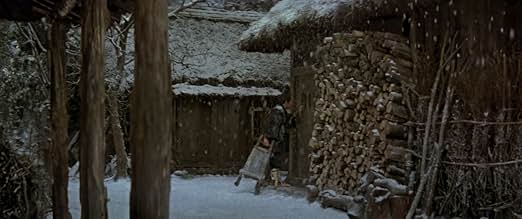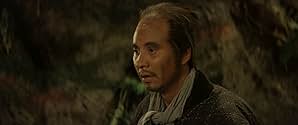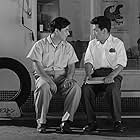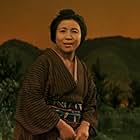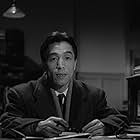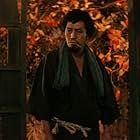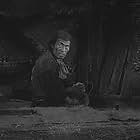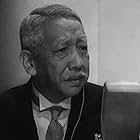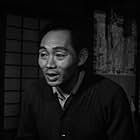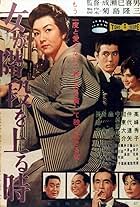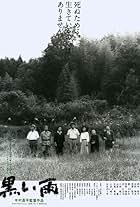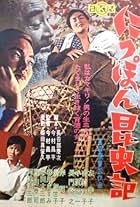IMDb RATING
7.8/10
3.9K
YOUR RATING
A kabuki theatre-inflected story about a poor village whose people have to be carried to a nearby mountain to die once they get old.A kabuki theatre-inflected story about a poor village whose people have to be carried to a nearby mountain to die once they get old.A kabuki theatre-inflected story about a poor village whose people have to be carried to a nearby mountain to die once they get old.
- Awards
- 6 wins & 1 nomination
- Director
- Writers
- All cast & crew
- Production, box office & more at IMDbPro
Storyline
Did you know
- TriviaThis was the final film to be added to Roger Ebert's list of "Great Movies" before his death on April 4, 2013 at the age of 70.
- ConnectionsFeatured in Tvennesnack: Varför kan vi inte komma ihåg den här jävla filmen? (2022)
Featured review
Classic Japanese cinema is something that isn't very popular here in the west. However several classic Japanese films still have large followings, the films of people like Akira Kurosawa, and Masaki Kobayashi have found relatively large audiences. Nevertheless there are still countless hidden gems that remain nearly completely unknown, even among the fans of Kurosawa and Kobayashi. These hidden gems rank among some of the most underrated films of all time. These films can come from the silent era, to postwar Americanized Japan. One such film that comes from the latter is Ballad of Narayama.
Ballad of Narayama is a film that is designed to protest euthanasia, through the film's central topic of Ubasute, Ubastute is the feudal Japanese practice, where the elderly and crippled are carried up mountains and left to die of exposure. The film is about a small isolated Japanese town in the mountains during feudal times. In this small town their is an old women by the name of Orin, (played by Kinuyo Tanaka, who starred in several of Kenji Mizoguchi's films.) who is approaching her 71st birthday. This may not seem like a big deal to us, but in the small-town this is shameful. In their eyes she should have been taken to Narayama, which is the mountain that villagers use to dispose of their elderly, years ago. The villagers see her as selfish for sticking around for so long, and to make things worse she still has a full set of teeth! (Again that doesn't seem important to us, but it is to them.) The film tells the story of how Orin's son Tatushei (played by Teiji Takahashi, who collaborated with Yasujiro Ozu several times.) must face the fact that he will eventually have to take Orin up to the top of the mountain.
Ballad of Narayama was directed by Keisuke Kinoshita, who while extremely skilled, is almost completely unknown. And he does wonders in Ballad of Narayama. Ballad of Narayama is one of the most unconventional films I have ever scene. Whether it's the singing narration, or the strangest transitions ever. Ballad of Narayama is always doing something to keep you invested and interested. I've gone over two paragraphs without mentioning Ballad of Narayama's (arguably) strongest aspect, it's lighting, set design, and cinematography. All of these combine to make Ballad of Narayama one of they most beautiful films ever made. The beauty really is impossible to describe, but Ballad of Narayama is one of a few films were just the visuals are able to evoke an emotional response. Another thing you'll notice about the film's visuals is that the film resembles a play. The film opens with a strange man standing in front of a curtain and he introduces the film to us and then the opening credits happen, and then the curtain opens and the film begins. The sets also seem very stage-like, and I mean that in the best way possible. There's something about the sets and lighting that just makes the films so alive and vivid. Every shot in the film pays such close attention to detail, it just feels like you're watching a feudal Japanese village.
Ballad of Narayama comments on much more than euthanasia, though that is the central focus. Like most postwar Japanese films Ballad of Narayama criticizes the traditional Japanese view of marriage. The idea that you always have to be married to be happy, and there is no such thing as a single life. The film also discusses the concept of justice and punishment, in one scene a character is caught stealing from one of the villagers, and all the villagers, then round up all of the thief's family and all of there possessions, and distribute it amongst themselves. Orin tries to protest this, saying it isn't right for the villagers to punish the thief's family for what he did. But even with all of its other social commentary, it's undeniable central focus is euthanasia. Rarely do films comment on topics that are this serious or controversial. It's not like Orin doesn't want to die, but she needs her son to carry her up to the top of Narayama, and her son doesn't want to be the one who kills her. Which makes it much more complex and controversial. I don't think I've ever even seen another film that dared touch on this topic. Ballad of Narayama takes its subject matter very seriously, yes their are happy and slightly comic moments in the film, the same way you would find them in a Kurosawa film. But when it needs to, Ballad of Narayama can bring its audience to tears.
Ballad of Narayama was remade by famed Japanese new wave director Shohei Imamura in 1983, Imamura's version won the Palme d'Or that year. And that is probably the most recognition the original 1958 film has received since its release. Well that or when in 2013 it became the last film to be added to Roger Ebert's great movies list before he died, but unfortunately even with the acclaim its received, Ballad of Narayama still remains one of the most criminally unknown films of all time.
9.4
Ballad of Narayama is a film that is designed to protest euthanasia, through the film's central topic of Ubasute, Ubastute is the feudal Japanese practice, where the elderly and crippled are carried up mountains and left to die of exposure. The film is about a small isolated Japanese town in the mountains during feudal times. In this small town their is an old women by the name of Orin, (played by Kinuyo Tanaka, who starred in several of Kenji Mizoguchi's films.) who is approaching her 71st birthday. This may not seem like a big deal to us, but in the small-town this is shameful. In their eyes she should have been taken to Narayama, which is the mountain that villagers use to dispose of their elderly, years ago. The villagers see her as selfish for sticking around for so long, and to make things worse she still has a full set of teeth! (Again that doesn't seem important to us, but it is to them.) The film tells the story of how Orin's son Tatushei (played by Teiji Takahashi, who collaborated with Yasujiro Ozu several times.) must face the fact that he will eventually have to take Orin up to the top of the mountain.
Ballad of Narayama was directed by Keisuke Kinoshita, who while extremely skilled, is almost completely unknown. And he does wonders in Ballad of Narayama. Ballad of Narayama is one of the most unconventional films I have ever scene. Whether it's the singing narration, or the strangest transitions ever. Ballad of Narayama is always doing something to keep you invested and interested. I've gone over two paragraphs without mentioning Ballad of Narayama's (arguably) strongest aspect, it's lighting, set design, and cinematography. All of these combine to make Ballad of Narayama one of they most beautiful films ever made. The beauty really is impossible to describe, but Ballad of Narayama is one of a few films were just the visuals are able to evoke an emotional response. Another thing you'll notice about the film's visuals is that the film resembles a play. The film opens with a strange man standing in front of a curtain and he introduces the film to us and then the opening credits happen, and then the curtain opens and the film begins. The sets also seem very stage-like, and I mean that in the best way possible. There's something about the sets and lighting that just makes the films so alive and vivid. Every shot in the film pays such close attention to detail, it just feels like you're watching a feudal Japanese village.
Ballad of Narayama comments on much more than euthanasia, though that is the central focus. Like most postwar Japanese films Ballad of Narayama criticizes the traditional Japanese view of marriage. The idea that you always have to be married to be happy, and there is no such thing as a single life. The film also discusses the concept of justice and punishment, in one scene a character is caught stealing from one of the villagers, and all the villagers, then round up all of the thief's family and all of there possessions, and distribute it amongst themselves. Orin tries to protest this, saying it isn't right for the villagers to punish the thief's family for what he did. But even with all of its other social commentary, it's undeniable central focus is euthanasia. Rarely do films comment on topics that are this serious or controversial. It's not like Orin doesn't want to die, but she needs her son to carry her up to the top of Narayama, and her son doesn't want to be the one who kills her. Which makes it much more complex and controversial. I don't think I've ever even seen another film that dared touch on this topic. Ballad of Narayama takes its subject matter very seriously, yes their are happy and slightly comic moments in the film, the same way you would find them in a Kurosawa film. But when it needs to, Ballad of Narayama can bring its audience to tears.
Ballad of Narayama was remade by famed Japanese new wave director Shohei Imamura in 1983, Imamura's version won the Palme d'Or that year. And that is probably the most recognition the original 1958 film has received since its release. Well that or when in 2013 it became the last film to be added to Roger Ebert's great movies list before he died, but unfortunately even with the acclaim its received, Ballad of Narayama still remains one of the most criminally unknown films of all time.
9.4
- willwoodmill
- Feb 29, 2016
- Permalink
- How long is The Ballad of Narayama?Powered by Alexa
Details
- Release date
- Country of origin
- Language
- Also known as
- Ballad of Narayama
- Filming locations
- Production company
- See more company credits at IMDbPro
Contribute to this page
Suggest an edit or add missing content

Top Gap
By what name was The Ballad of Narayama (1958) officially released in Canada in English?
Answer


